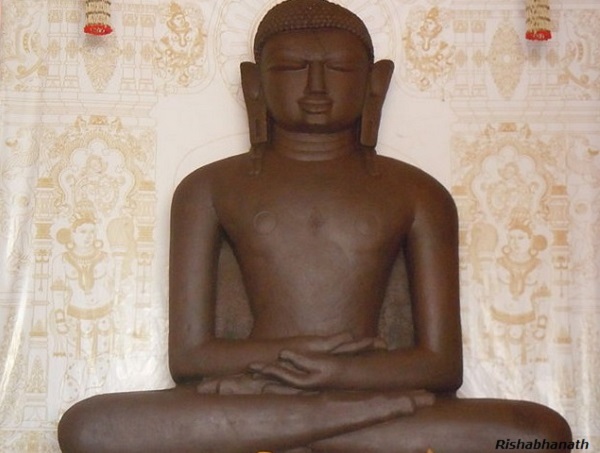Jainism – Indian History Notes – For W.B.C.S. Examination.
জৈন ধর্ম – ভারতীয় ইতিহাসের নোট – WBCS পরীক্ষা।
In the sixth century BC, India witnessed the rise of two new religions – Jainism and Buddhism. The primary reason for the rise of these religions was the religious unrest at that time in the country. This unrest was attributed to the rituals and sacrifices advocated by the Later Vedic period which were not understood by a larger section of people. The Rise of Jainism in India was a result of a mixture these factors.Continue Reading Jainism – Indian History Notes – For W.B.C.S. Examination.
The Jain Tradition:
- The Jain tradition had a succession of tirthankars(religious leader).
- The first Tirthankar was Rishabha Dev.
- The 23rd Tirthankar was Parshavanath who founded Jainism.
- According to the Jain tradition, time is infinite and constituted by upward and downward movements. The tirthankars appear in succession in time, to teach the about the way of release of soul from material entanglements of this world.
Vardhaman Mahavira (539- 467 B.C.)
- Vardhamana Mahavira was the 24th Tirthankar of the Jain tradition. He is considered the last tirthankar.
- He was born at Kundagrama near Vaisali in about 546 BC.
- He was born to Kshatriya parents Siddhartha and Trisala.
- He was married to Yasoda and had a daughter from his marriage named Anojja or Priyadarsana.
- He renounced the world at the age of thirty to become an ascetic and wandered for twelve years. He also practiced self-mortification for these years.
- In the 13th year of his penance, he attained the highest spiritual knowledge by triumphing over himself. This knowledge is called Kevala Gnan.
- Thereafter, he was called Mahavira, Jina, Kevalin.
- His followers were called the Jains and this religion came to be known as Jainism.
- From this time till his death, he preached his doctrines for 30 years.
- He died at the age of 72 at Pava near Rajagriha(now in Patna district).
Teachings of Mahavira:
- Jainism rejects the authority of Vedas and Vedic rituals.
- It discards the belief in God.
- Therefore, Jains don’t worship God, but instead worship their tirthankars(their souls have attained salvation).
- The 3 principles of Jainism are also known as TriRatnas (three gems) are:- – right faith, right knowledge, right conduct.
- Right faith – It is the belief in the teachings and wisdom of Mahavira. Followers of Jainism are expected to have right faith.
- Right Knowledge – It is the acceptance of theory which says there is no God and that the world has been existing without a creator, all objects possess a soul.
- Right conduct – It refers to the observance of the five great vows:- not to injure life, not to lie, not to steal, not to acquire property, not to lead immoral life.
- Everyone had to strictly follow the doctrine of Ahimsa.
- Mahavira considered all objects, both animate and inanimate, to have souls and different degrees of consciousness.
- He considered all objects to possess life and feel pain when they are injured.
- Mahavira advocated a very holy and ethical code of life.
- He considered even the practice of agriculture as sinful because it causes injury to the earth, worms and animals.
- The doctrine of asceticism and renunciation was considered the shortest path to salvation by going to extreme lengths for the practice of starvation, nudity and other forms of self-torture.
Spread of Jainism:
- Mahavira had organised the Sangha to spread his teachings, much like Buddhism.
- He admitted both genders men and women in the Sangha.
- Sangha consisted of both monks and lay followers.
- The rapid rise of Jainism has been attributed to the dedicated work of the Sangha members who caused the spread of Jainism in Western India and Karnataka.
- Jainism was patroised by rulers like Chandragupta Maurya, Kharavela of Kalinga and the royal dynasties of south India like the Gangas, the Kadambas, the Chalukyas and the Rashtrakutas.
Division of Jainism:
- The division in Jainism happened by the end of the fourth century B.C.
- A serious famine occurred in the Ganges valley. Various Jain monks led by Bhadrabagu and Chandragupta Maurya went to Sravana Belgola in Karnataka. These came to be known as Digambars(Sky-clad or Naked). They follow the tenets of religion strictly.
- The monks who stayed back in north India were led by Sthulbahu, he changed the code of conduct for the monks. This sect became more liberal and started wearing white clothes. Hence, they came to be known as Swetambars.
Please subscribe here to get all future updates on this post/page/category/website


 +919674493673
+919674493673  mailus@wbcsmadeeasy.in
mailus@wbcsmadeeasy.in







































































































